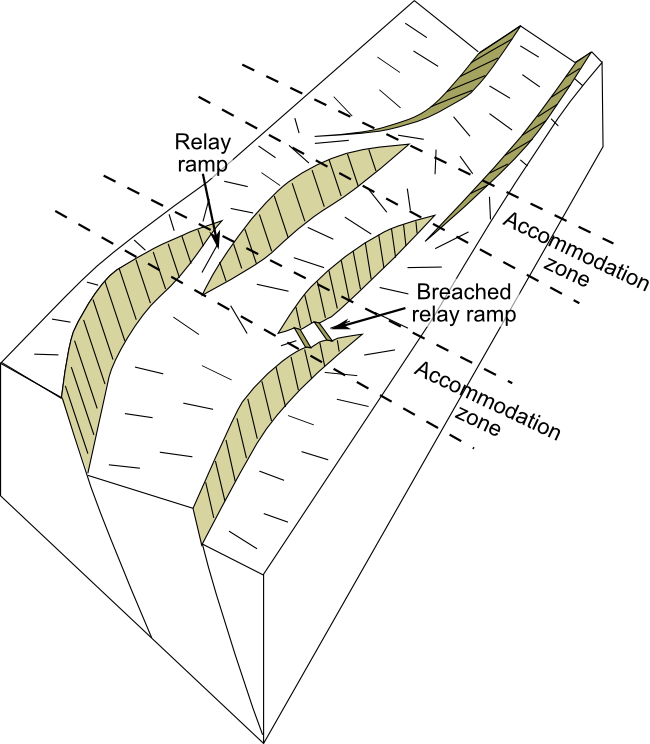|
Asunción Rift
The Asunción Rift is a composite graben and rift in eastern Paraguay. The rift is at some localities filled with up to 2500 m of sediments. The rift has a width of 40 to 25 km and can be divided in three segments. The western segment has a NW-SE strike and runs a length of over 90 km between the localities of Benjamin Aceval and Paraguarí. The central section runs from Paraguarí Paraguarí (; gn, Paraguari) is a city, '' distrito'' and capital of Paraguarí Department in Paraguay, located 66 km from the country's capital, Asunción. At the 2002 census it had a population of 22,154. [...More Info...] [...Related Items...] OR: [Wikipedia] [Google] [Baidu] |
Graben
In geology, a graben () is a depressed block of the crust of a planet or moon, bordered by parallel normal faults. Etymology ''Graben'' is a loan word from German, meaning 'ditch' or 'trench'. The word was first used in the geologic context by Eduard Suess in 1883. The plural form is either ''graben'' or ''grabens''. Formation A graben is a valley with a distinct escarpment on each side caused by the displacement of a block of land downward. Graben often occur side by side with horsts. Horst and graben structures indicate tensional forces and crustal stretching. Graben are produced from parallel normal faults, where the displacement of the hanging wall is downward, while that of the footwall is upward. The faults typically dip toward the center of the graben from both sides. Horsts are parallel blocks that remain between graben; the bounding faults of a horst typically dip away from the center line of the horst. Single or multiple graben can produce a rift valley. Ha ... [...More Info...] [...Related Items...] OR: [Wikipedia] [Google] [Baidu] |
Rift
In geology, a rift is a linear zone where the lithosphere is being pulled apart and is an example of extensional tectonics. Typical rift features are a central linear downfaulted depression, called a graben, or more commonly a half-graben with normal faulting and rift-flank uplifts mainly on one side. Where rifts remain above sea level they form a rift valley, which may be filled by water forming a rift lake. The axis of the rift area may contain volcanic rocks, and active volcanism is a part of many, but not all, active rift systems. Major rifts occur along the central axis of most mid-ocean ridges, where new oceanic crust and lithosphere is created along a divergent boundary between two tectonic plates. ''Failed rifts'' are the result of continental rifting that failed to continue to the point of break-up. Typically the transition from rifting to spreading develops at a triple junction where three converging rifts meet over a hotspot. Two of these evolve to t ... [...More Info...] [...Related Items...] OR: [Wikipedia] [Google] [Baidu] |
Paraguay
Paraguay (; ), officially the Republic of Paraguay ( es, República del Paraguay, links=no; gn, Tavakuairetã Paraguái, links=si), is a landlocked country in South America. It is bordered by Argentina to the south and southwest, Brazil to the east and northeast, and Bolivia to the northwest. It has a population of seven million, nearly three million of whom live in the Capital city, capital and largest city of Asunción, and its surrounding metro. Although one of only two landlocked countries in South America (Bolivia is the other), Paraguay has ports on the Paraguay River, Paraguay and Paraná River, Paraná rivers that give exit to the Atlantic Ocean, through the Paraná-Paraguay Waterway. Spanish conquistadores arrived in 1524, and in 1537, they established the city of Asunción, the first capital of the Governorate of the Río de la Plata. During the 17th century, Paraguay was the center of Reductions, Jesuit missions, where the native Guaraní people were converted to Ch ... [...More Info...] [...Related Items...] OR: [Wikipedia] [Google] [Baidu] |
Strike And Dip
Strike and dip is a measurement convention used to describe the orientation, or attitude, of a planar geologic feature. A feature's strike is the azimuth of an imagined horizontal line across the plane, and its dip is the angle of inclination measured downward from horizontal. They are used together to measure and document a structure's characteristics for study or for use on a geologic map. A feature's orientation can also be represented by dip and dip direction, using the azimuth of the dip rather than the strike value. Linear features are similarly measured with trend and plunge, where "trend" is analogous to dip direction and "plunge" is the dip angle. Strike and dip are measured using a compass and a clinometer. A compass is used to measure the feature's strike by holding the compass horizontally against the feature. A clinometer measures the features dip by recording the inclination perpendicular to the strike. These can be done separately, or together using a tool such a ... [...More Info...] [...Related Items...] OR: [Wikipedia] [Google] [Baidu] |
Benjamin Aceval
Benjamin ( he, ''Bīnyāmīn''; "Son of (the) right") blue letter bible: https://www.blueletterbible.org/lexicon/h3225/kjv/wlc/0-1/ H3225 - yāmîn - Strong's Hebrew Lexicon (kjv) was the last of the two sons of Jacob and Rachel (Jacob's thirteenth child and twelfth and youngest son) in Jewish, Christian and Islamic tradition. He was also the progenitor of the Israelite Tribe of Benjamin. Unlike Rachel's first son, Joseph, Benjamin was born in Canaan according to biblical narrative. In the Samaritan Pentateuch, Benjamin's name appears as "Binyamēm" (Samaritan Hebrew: , "son of days"). In the Quran, Benjamin is referred to as a righteous young child, who remained with Jacob when the older brothers plotted against Joseph. Later rabbinic traditions name him as one of four ancient Israelites who died without sin, the other three being Chileab, Jesse and Amram. Name The name is first mentioned in letters from King Sîn-kāšid of Uruk (1801–1771 BC), who called himself “King ... [...More Info...] [...Related Items...] OR: [Wikipedia] [Google] [Baidu] |
Paraguarí
Paraguarí (; gn, Paraguari) is a city, '' distrito'' and capital of Paraguarí Department in Paraguay, located 66 km from the country's capital, Asunción. At the 2002 census it had a population of 22,154. Retrieved 8 March 2010 Toponymy Paraguarí is called “The cradle of the National Independence”. In that city on January 13, 1811, the Paraguayans Yegros, Gamarra and Cabañas, with their troops, defeated the , commanded by the General |
Villarrica, Paraguay
Villarrica del Espíritu Santo (), is a city in Paraguay. Located in the middle of the Oriental Region of the Paraguayan territory, it is the capital of the Guairá Department. It was founded by the Spanish Captain Ruy Diaz de Melgarejo on May 14, 1570. Villarrica has many places that honor the Paraguayan culture, such as the monument to the memory of Manuel Ortiz Guerrero, honorary citizen of the city. About this city Bacón Duarte Prado (journalist and musician) wrote: ''Villarrica is the city of the eternal youth, born from the waters of the Ycuá Pytá and the breeze that comes from the hills''. Founded by the Spanish Ruy Diaz de Melgarejo, 350 km east from the Saltos del Guaira, on May 14, 1570, with the name Villa Rica del Espíritu Santo (Villa Rica of the Holy Spirit), finally settled in 1682 in the hills near the Ybytyruzu, part of the Caaguazú Cordillera, 180 m above ocean level. The city is located near the Ybyturuzú, part of the Caaguazú mountain chain. T ... [...More Info...] [...Related Items...] OR: [Wikipedia] [Google] [Baidu] |
Journal Of South American Earth Sciences
The ''Journal of South American Earth Sciences'' is a peer-reviewed scientific journal published by Elsevier. It covers the earth sciences, primarily on issues that are relevant to South America, Central America, the Caribbean, Mexico, and Antarctica. The journal was established in 1988 and the editor-in-chief is James Kellogg ( University of South Carolina). According to the ''Journal Citation Reports'', the journal has a 2012 impact factor of 1.533. See also *'' Ameghiniana'' *''Andean Geology'' *'' Brazilian Journal of Geology'' *'' Latin American Journal of Sedimentology and Basin Analysis'' *''Revista de la Asociación Geológica Argentina The ''Revista de la Asociación Geológica Argentina'' is an open access peer-reviewed scientific journal In academic publishing, a scientific journal is a periodical publication intended to further the progress of science, usually by repor ...'' References External links * Geology journals Geology of South America Geolo ... [...More Info...] [...Related Items...] OR: [Wikipedia] [Google] [Baidu] |
Rifts And Grabens
A rift is a geological structure. Rift(s) or The Rift may also refer to: Film and television * ''The Rift'' (1990 film), a film directed by Juan Piquer Simón * ''Rift'' (film), a 2019 Nigerian film directed by Biodun Stephen * Cardiff Rift or The Rift, a fictional wormhole in the ''Doctor Who'' universe Games * ''Rift'' (video game), a 2011 massively multiplayer online role-playing game * ''Rifts'' (role-playing game), 1990 multi-genre role-playing game created by Kevin Siembieda * '' Rifts: Promise of Power'', a 2005 video game * ''Far Gate'', development title ''The Rift'', a 2001 computer game Literature * ''The Rift'' (Allan novel), a 2017 novel by Nina Allan * ''The Rift'' (Williams novel), a 1999 novel by Walter Jon Williams * ''The Rift'' (Star Trek), a 1991 novel by Peter David * '' Avatar: The Last Airbender – The Rift'', a 2014 graphic novel Music * ''Rift'' (album), a 1993 album by Phish * "Rift", a song by Northlane from the 2019 album '' Alien'' * ''Ri ... [...More Info...] [...Related Items...] OR: [Wikipedia] [Google] [Baidu] |
Geology Of Paraguay
The country of Paraguay lies geologically at the borderzone between several cratons. Due to thick Cenozoic sediment cover and regolith development few outcrops are available in Paraguay.Fúlfaro V. JGeology of Eastern Paraguay/ref> East of Paraguay River Precambrian and Early Paleozoic crystalline basement crop out mainly in the heights of Caapucú and Apa. The geological processes that have shaped Paraguay's bedrock and sedimentary basins are diverse including rifting, marine sedimentation, metamorphism, eruption of flood basalts and alkaline potassic volcanism. Pre-Silurian basement Serranías de Paraguarí in alkaline intrusives of Cretaceous">Early Cretaceous age. Caapucú High Caapucú High (formerly called ''Precámbrico Sur'' and ''Saliente del Pilar'') is the Northwesternmost outcrop of Río de la Plata Craton. The rocks found in the Caapucú High include porphyritic granitic rocks, orthogneisses, paragneisses, amphibolites, migmatites, talc schists and rhyolite ... [...More Info...] [...Related Items...] OR: [Wikipedia] [Google] [Baidu] |


